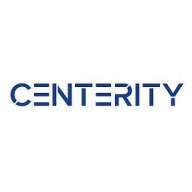

DX Spectrum and Centerity Monitor are competing in the network monitoring and management space. DX Spectrum appears to have the upper hand in flexibility and integration, whereas Centerity Monitor leads with its analytics and enterprise feature set.
Features: DX Spectrum delivers dynamic topology mapping, fault isolation capabilities, and real-time network insights. Centerity Monitor provides advanced analytics, automation, and tools for deep system performance insights.
Room for Improvement: DX Spectrum can improve in user interface simplicity, integration with non-network systems, and reducing setup time. Centerity Monitor could enhance customization options, provide more detailed network infrastructure visualization, and streamline advanced user configurations.
Ease of Deployment and Customer Service: DX Spectrum uses a modular deployment model with scalable and adaptable options along with responsive support. Centerity Monitor offers a straightforward installation process that eases onboarding while providing comprehensive customer service.
Pricing and ROI: DX Spectrum has a typically higher setup cost with potential long-term ROI through network efficiency improvements. Centerity Monitor's lower initial cost offers ROI driven by analytics and management automation.
| Product | Market Share (%) |
|---|---|
| DX Spectrum | 0.9% |
| Centerity Monitor | 0.2% |
| Other | 98.9% |

| Company Size | Count |
|---|---|
| Small Business | 26 |
| Midsize Enterprise | 19 |
| Large Enterprise | 88 |
DX Spectrum is a complete event and fault management system for network operations teams. The tool provides powerful capabilities for managing your dynamic, complex IT infrastructure, which includes physical, virtual, and cloud environments.The technology allows you to manage and optimize the infrastructure and the professional services that operate on top of it. DX Spectrum is a unified platform that helps your company enhance network service levels while lowering monitoring costs.
DX Spectrum has intelligent event correlation and root-cause analysis capabilities. It can pinpoint the precise components that are causing issues with availability and network settings. Reports and dashboards can be customized with role-based views. Change management solutions can also be used by teams to govern, track, and remediate changes across network devices.
DX Spectrum can identify multi-technology and multi-vendor stacks, as well as new software-defined networks (SDNs). It supports Multicast, MPLS, VPN, and VRF, among other routing protocols and technologies.
DX Spectrum Features
DX Spectrum has many valuable key features. Some of the most useful ones include:
DX Spectrum Benefits
There are many benefits to implementing DX Spectrum. Some of the biggest advantages the solution offers include:
Reviews from Real Users
DX Spectrum stands out among its competitors for a number of reasons. Two major ones are its robust root cause analysis and its event correlation tool. PeerSpot users take note of the advantages of these features in their reviews:
Umair A., Enterprise Solutions & Services Head at Duroob Technologies, writes of the product, “It covers networks very well. It has all the capabilities that you're looking for when it comes to monitoring. Spectrum is great for root cause analysis. It has excellent correlation event management. Spectrum's stability and scalability are also amazing. If you have a CA Service Desk, then it can be integrated so that if you have open tickets they can be closed automatically.”
Itarchit, an IT Architect at a comms service provider, notes, “The most valuable feature is the event correlation mechanism. I also like the product's multi-customer approach.” He adds, “We haven't seen a better product. Overall, I am happy with this solution. Based on the current market, I would rate DX Spectrum a nine out of ten.”
We monitor all IT Infrastructure Monitoring reviews to prevent fraudulent reviews and keep review quality high. We do not post reviews by company employees or direct competitors. We validate each review for authenticity via cross-reference with LinkedIn, and personal follow-up with the reviewer when necessary.